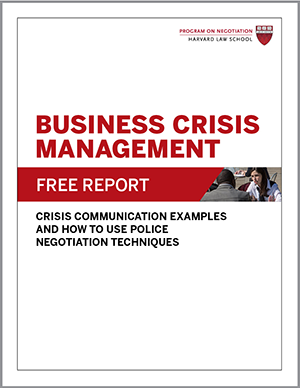
What’s the best way to respond to a public relations crisis? As crisis communication examples show, some organizations and individuals opt for humor, hoping some levity will lighten the mood and restore normalcy. We take a look at how the Obama White House used humor to try to rebound from its disastrous 2013 Affordable Care Act (ACA) rollout and then consider when humor may and may not be helpful in government, nonprofit, and business crisis management.
An Unorthodox Interview
The ACA, commonly known as Obamacare, was then-president Barack Obama’s signature legislation, one he fought tooth and nail to pass through Congress. Despite its importance to his presidency, the healthcare.gov website, where citizens were invited to sign up for affordable health insurance, got off to a disastrous start. On October 1, 2013, the day of the website’s launch, millions of Americans were unable to log in, encountered slow or frozen pages, or found incorrect or missing information, as USA Today reports. The site remained glitchy in the months ahead, contributing to sluggish sign-ups.
While the site was being repaired, the White House sought to turn around the bad publicity and persuade Americans to sign up for insurance by the March 31, 2014, deadline. In particular, to keep plans affordable, the administration would need to convince younger, healthier Americans to join.
As part of its campaign to target young viewers, the White House reportedly responded to an invitation for the president to appear on Between Two Ferns, the deliberately low-budget Internet talk show hosted by actor Zach Galifianakis. In negotiations to set the terms of the president’s appearance, Galifianakis’s reps “made clear that it had to be like every other Between Two Ferns” episode, Brad Jenkins, then the associate director of the White House’s Office of Public Engagement, told Jacobin. “It couldn’t be some big Obamacare commercial.”
During the episode, which aired March 11, 2014, Obama gamely traded scripted zingers with the deadpan host for several minutes. (Galifianakis: “I have to know: What is it like to be the last Black president?” Obama: “Seriously? What’s it like for this to be the last time you ever talk to a president?”) Then the president got down to business: “Have you heard of the Affordable Care Act?” he asked.
“Oh yeah, I heard about that,” Galifianakis replied. “That’s that thing that doesn’t work. Why would you get the guy who created the Zune to make your website?”
“Healthcare.gov works great now,” Obama said, launching into his spiel, “and millions of Americans have already gotten health insurance plans, and what we want is for people to know that you can get affordable health care.”
Though some conservative commentators panned the interview as unpresidential, it was a hit with its intended audience, quickly racking up 30 million views. (Somewhat ironically, the show’s servers reportedly had trouble keeping up with demand, according to NPR.)
More importantly for Obama, traffic at healthcare.gov spiked 40% after the interview aired, White House senior adviser Valerie Jarrett told CBS This Morning. More than 90% of the Between Two Ferns viewers who visited HealthCare.gov were doing so for the first time. Obamacare’s troubles were far from over, but the show met its short-term goal of driving young Americans to the site.
When Is It a Laughing Matter?
The Between Two Ferns episode is just one of many crisis communication examples in which humor has been used to try to defuse a crisis. When restaurant chain KFC ran out of chicken to serve in its United Kingdom and Ireland stores in 2018, it tweeted an image of one of its iconic chicken buckets—empty, with the chain’s initials reordered to spell out “FCK.” The response “was a stroke of genius which transformed marketing mayhem into a brand breakthrough—and rewrote the manual for corporate crisis management,” according to Campaign UK. Yet humor can backfire in brand and corporate crisis management. For example, when Ellen DeGeneres addressed reports of a toxic work environment on her talk show, her apology included a few jokes, which some criticized as inappropriate.
In a 2022 article in the Journal of Interactive Marketing, researchers Ying Yu, Li Huang, Ping Qing, and Tong Chen investigated the effectiveness of humor in crisis communication, specifically in social media crisis management. In their experiments, the researchers distinguished between two types of negative events that may require crisis communication: (1) defensible negative events, or those that “do not violate rules or safety standards and for which the firm itself is not seen as being at fault,” and (2) indefensible negative events, or “unfavorable incidents that violate rules or safety standards and cause harm to consumers.”
They found in their research that when a negative event was defensible, addressing it with humorous language was likely to lead to favorable outcomes. But when the negative event was indefensible, using humorous language prompted negative attitudes in participants and even a decline in sales for the organization. Other factors are also likely to affect whether joking will alleviate or exacerbate a crisis, including its severity, the sensitivity of the context, and the target of the humor. A coordinated team effort may be needed to determine whether a crisis can be turned into a laughing matter.
What have you learned from other crisis communication examples about how to respond publicly to a crisis?





